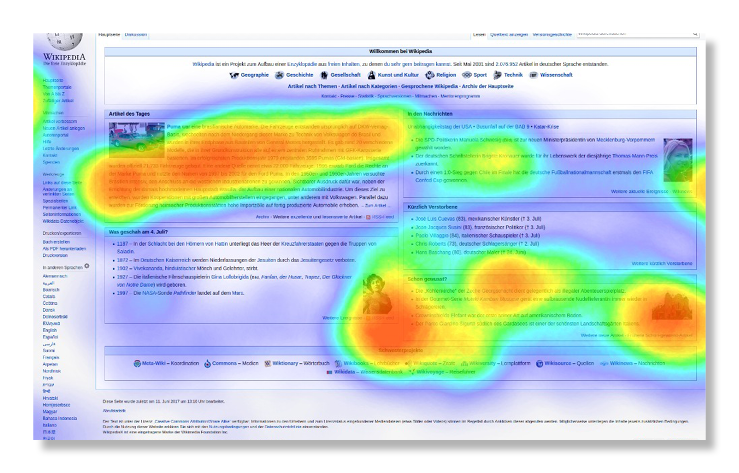Contents
- 1
- 2 What is a heatmap?
- 3 ● They are invaluable for optimizing marketing campaigns.
- 4 ● It helps you understand user behavior.
- 5 ● They help you understand where your website visitors are coming from
- 6 ● They tell you if users like your site design.
- 7 Get the tools you need to collect and analyze data
- 8 Conclusion
Heatmaps are a powerful tool for understanding how your website visitors interact with your site. They’re accommodating for marketers and designers because they allow you to track eye movements, clicks, mouse hovers, and scroll movements on any webpage.
In other words, heatmaps let you see exactly where people look when they’re looking at a page—and what they don’t look at.
Hence, the best marketing analytics platform has heatmaps integrated into them that can offer you great insights into your marketing performance.
What is a heatmap?
They are a visual representation of data, allowing you to optimize your website to improve conversion rates. It is a visual representation of where visitors click on your webpage or website. If they’re not clicking where you want them to, it can help you make adjustments to increase conversions and boost sales.
They can also be used in marketing campaigns by providing insights into user behavior when interacting with an ad or content campaign.
For example, suppose someone clicks on an ad but doesn’t take further action (like inquiring). In that case, this could indicate there may be something wrong with the ad itself—it might not give enough information about what the user will receive or why it will benefit them—or it could show that there was something else going on at that particular time (maybe they were in the middle of doing something else).
The following are some of the benefits that heatmaps offer:
● They are invaluable for optimizing marketing campaigns.
Heatmaps are like a window into your user’s mind. They help you understand how users interact with your website, where they come from, and if they like your site design. They are also invaluable for optimizing marketing campaigns because they can tell you what’s working (and what isn’t) at a glance.
● It helps you understand user behavior.
They are a visual representation of how users interact with your website. They can provide valuable information about what your users are looking at, clicking on, scrolling past, and staying away from.
When you put heatmaps on your website, you can get a clearer picture of where people’s eyes are going when they visit your page. You’ll know if they’re focusing on the buttons or headlines in certain areas more than others.
If there are dead zones where no one seems to be looking for information—or worse yet, if parts of the page aren’t getting any attention, you can address those issues to improve user experience and conversions.
● They help you understand where your website visitors are coming from
When looking at it, you can see where users have clicked on the page, which parts of the page they have viewed, and how long they spent viewing each part of it. This information is important because it allows you to see how your site’s visitors interact with it.
You can also use heatmaps to determine what traffic sources send many visitors to your site.
● They tell you if users like your site design.
When you look at a heatmap, it can be easy to see that large areas of the page are colored red or orange. Many people clicked on those areas and got frustrated when nothing happened. This could indicate too many clickable options on the site or an error in the programming (instead of being poorly designed). It provides an overall picture of how users interact with your website design.
Get the tools you need to collect and analyze data
There are many different tools you can use to collect and analyze data. Consider using a holistic marketing analytics platform with an integrated heatmap feature. A marketing analytics platform has more features than a heatmap. An ideal tool will help you analyze where users click and give you features to analyze the number of clicks, track leads, web form analytics, real-time alerts, dynamic email tracking, and a lot more. These features make your marketing process easy.
Conclusion
In conclusion, heatmaps are an invaluable tool for marketers. They can help you understand why your users leave your site, what they like about it, and more. This can then be used to optimize your marketing campaigns and make them more effective in the future.


